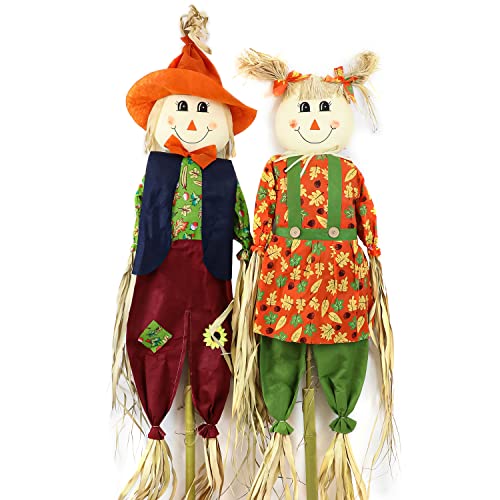The Purpose and Lifespan of Scarecrows
If you’ve ever wondered how long scarecrows typically last, you’re not alone. Scarecrows have been used for centuries to scare away birds and other pests from crops. These human-like figures have evolved over time, but one question remains: how long can a scarecrow withstand the elements and continue to fulfill its purpose? In this article, we’ll explore the factors that affect the lifespan of scarecrows and provide an answer to this intriguing question.
Material Factors that Impact Scarecrows’ Longevity
The materials used in constructing a scarecrow can greatly influence its lifespan. Natural materials like straw and wood may deteriorate more quickly over time due to exposure to sunlight, rain, and wind. However, some materials, such as PVC pipes or metal frames, offer sturdiness and durability that can prolong the lifespan of a scarecrow. By using these long-lasting materials, scarecrows can withstand more years of wear and tear before needing to be replaced.
Weather and Environmental Conditions as Key Determining Factors
Scarecrows are often placed in open fields, where they are exposed to various weather conditions. Extreme temperatures, rainfall, and high winds can all impact the longevity of scarecrows. Harsh winters with freezing temperatures can cause materials to crack and become brittle, while intense sun exposure can bleach and weaken fabrics. Additionally, strong winds and heavy rain can cause scarecrows to become disheveled or even completely collapse. Considering this, scarecrows placed in regions with milder climates may generally last longer than those in areas with more extreme weather conditions.
Maintenance and Care: Prolonging the Lifespan of Scarecrows
Regular maintenance and care can significantly extend the lifespan of scarecrows. Simple actions such as inspecting for damage and making timely repairs can help prevent small issues from escalating into larger problems. Reinforcing weak areas, like the arms or head, can also help prolong a scarecrow’s lifespan. Additionally, removing nests or debris birds may build on a scarecrow can prevent potential damage caused by pests. By addressing any maintenance needs promptly and ensuring proper care, scarecrows can be kept in good condition and continue to serve their purpose for years.
Conclusion: The Average Lifespan of Scarecrows
As with most things, the lifespan of a scarecrow can vary depending on the aforementioned factors. On average, scarecrows that are well-constructed using durable materials and properly maintained can last anywhere from one to three years. However, it is important to note that some scarecrows may last even longer, while others may deteriorate more quickly. Ultimately, the key to maximizing the lifespan of a scarecrow lies in using quality materials, considering the environmental conditions it will be exposed to, and regularly tending to its maintenance needs.






